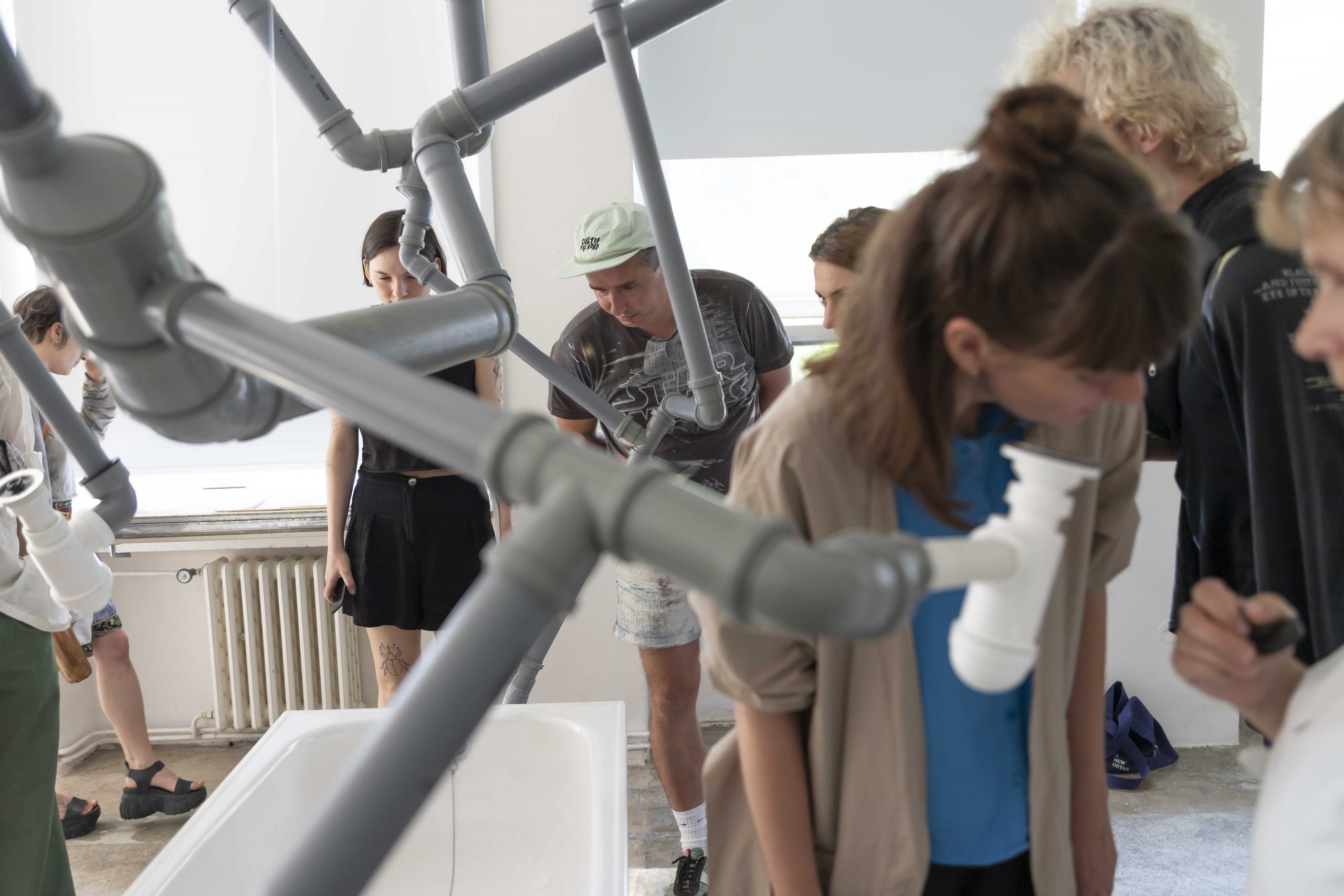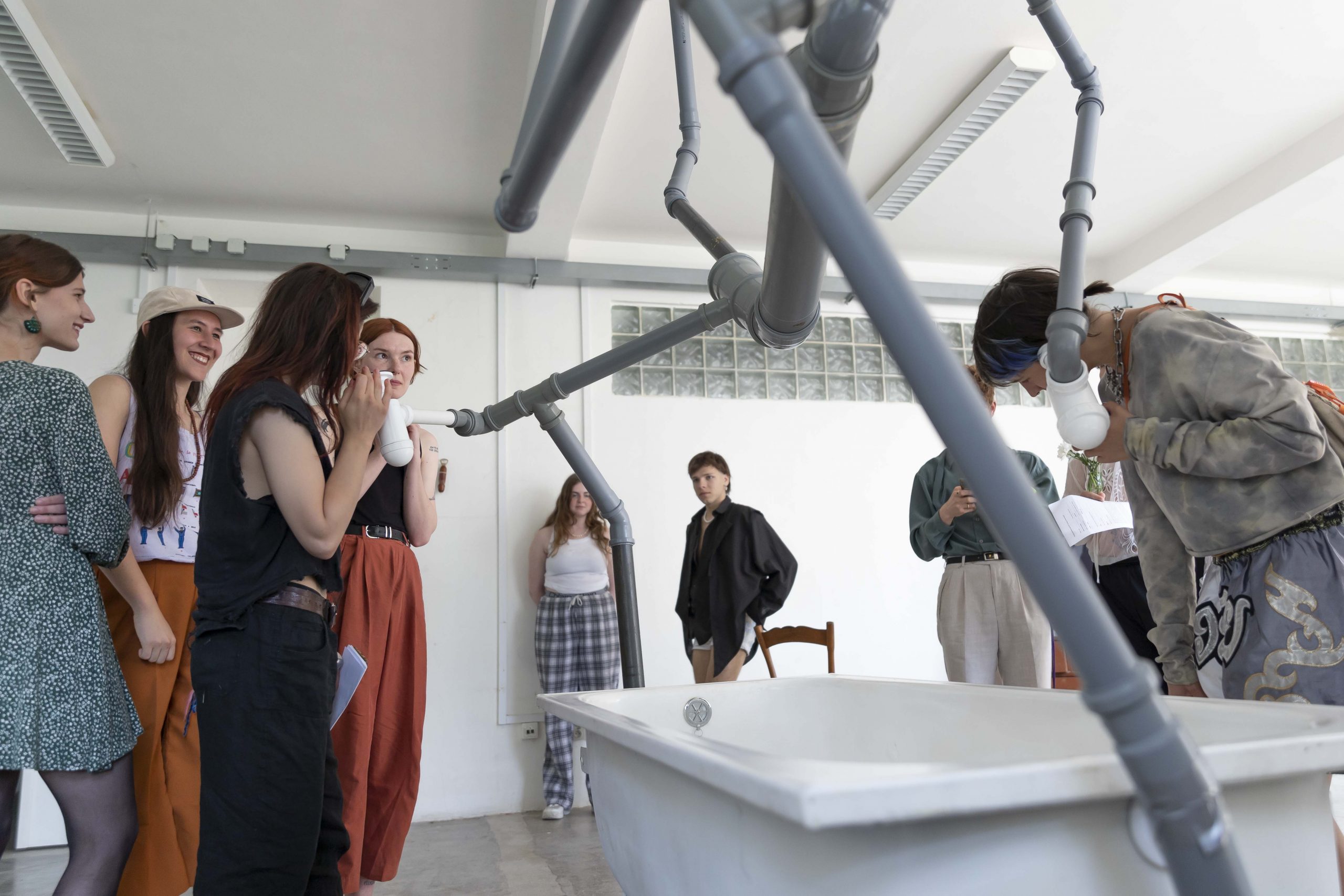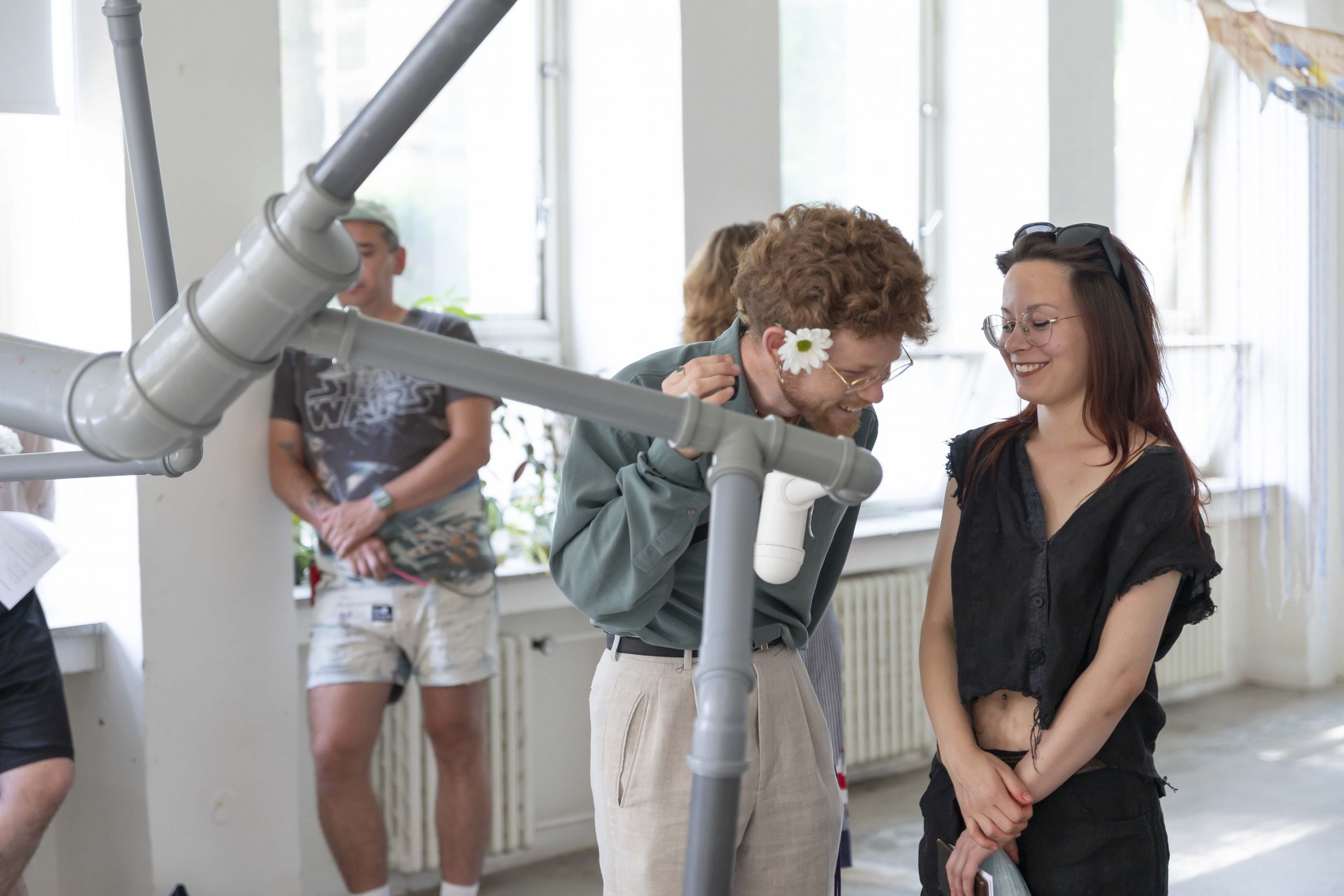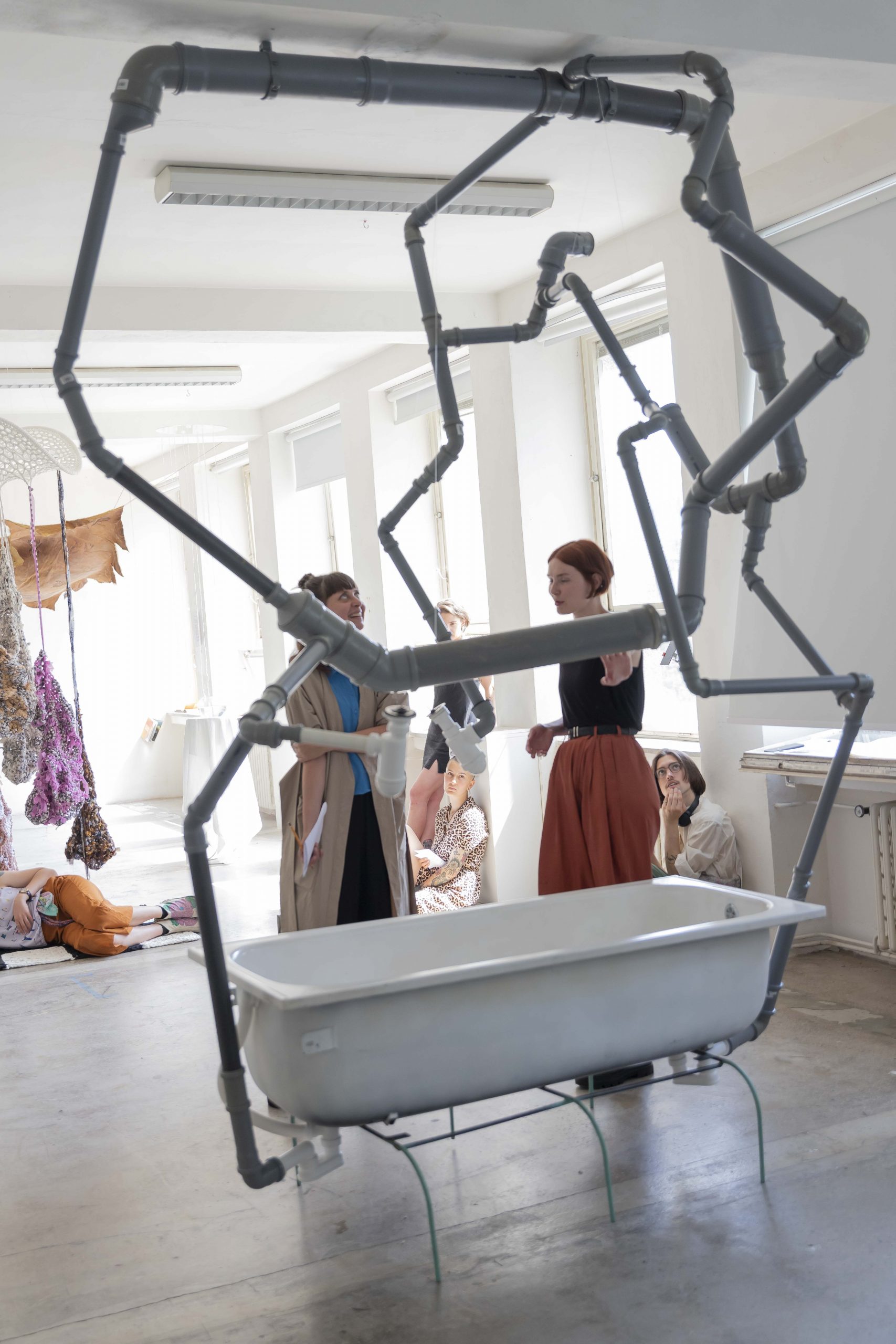Eva Gatialvá
9. Sifónia
Klauzura
9. Siphony is an interactive sound object that combines themes such as repetition, spinning in a (vicious) circle, generational trauma and chaotic thoughts with the theme of water, fluidity and non-(purity). The installation includes two sound recordings: one is made up of mind-map texts that contain thoughts and ideas that were never realised, accompanied by excerpts from Ingeborg Bachman's poems. The second recording is a quotation from the book Hunger by Elfriede Jelinek, which is dedicated to water. The central element of the installation is a bathtub and the closed circuit of pipes formed around it, in which the same thing circulates around and around. The bathtub and the bathroom, as a space reserved for cleansing, thus becomes a place where deposits are deposited and the same thing is repeated over and over again. But the circulating noise can be freed by unclogging the drains and letting the sound out. The idea for the installation was originally conceived as a set design for a play based on the book This Room Can't Be Eaten by Nicole Hochholczer.



